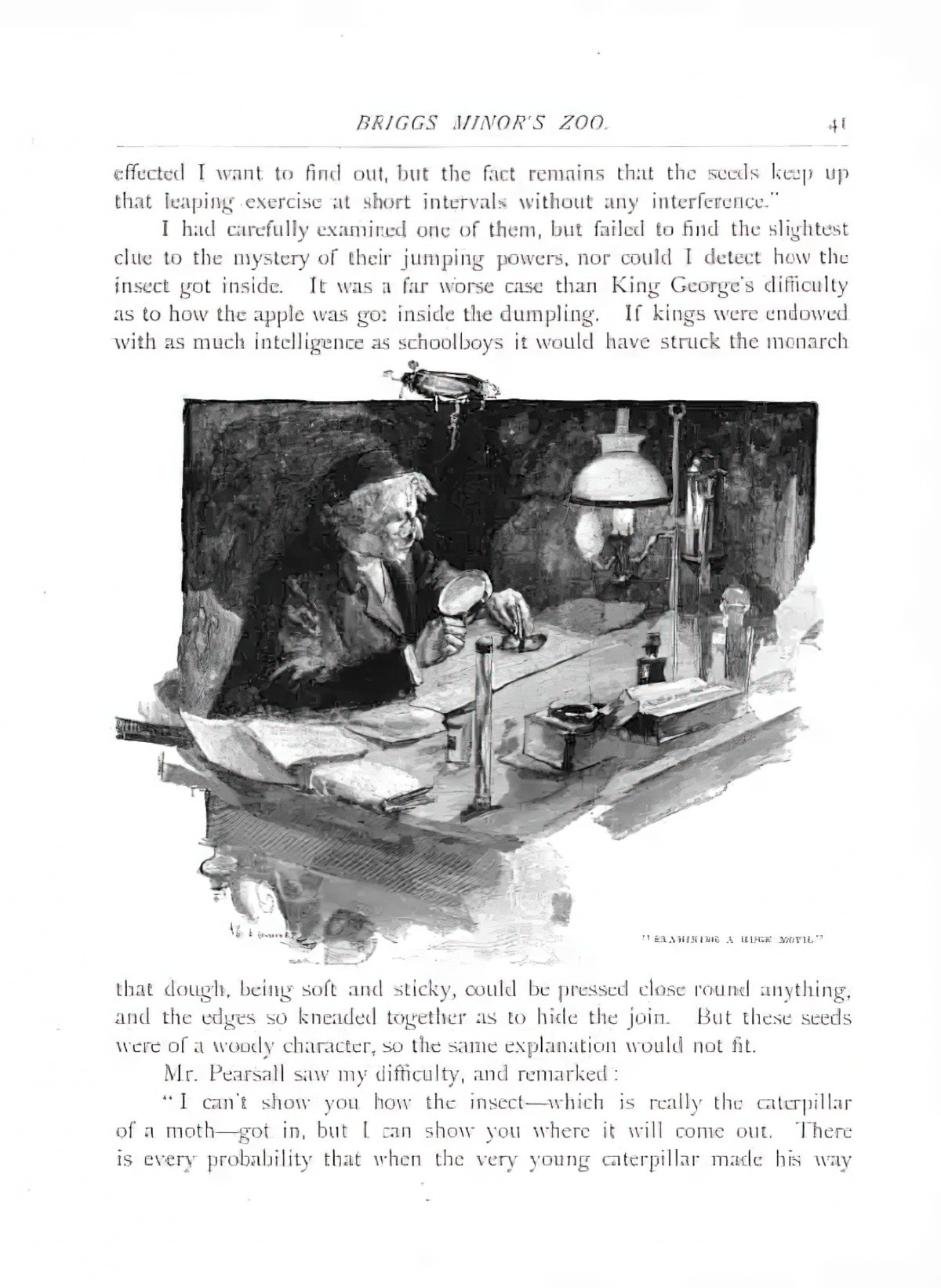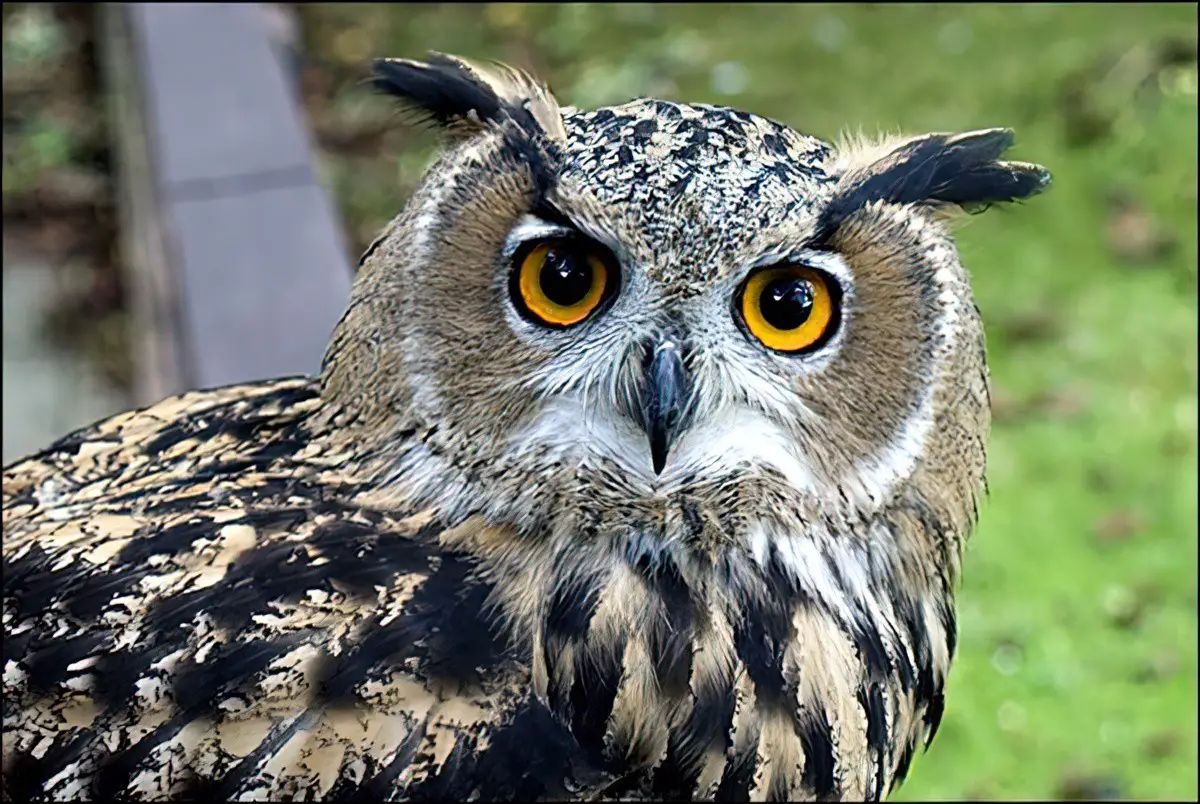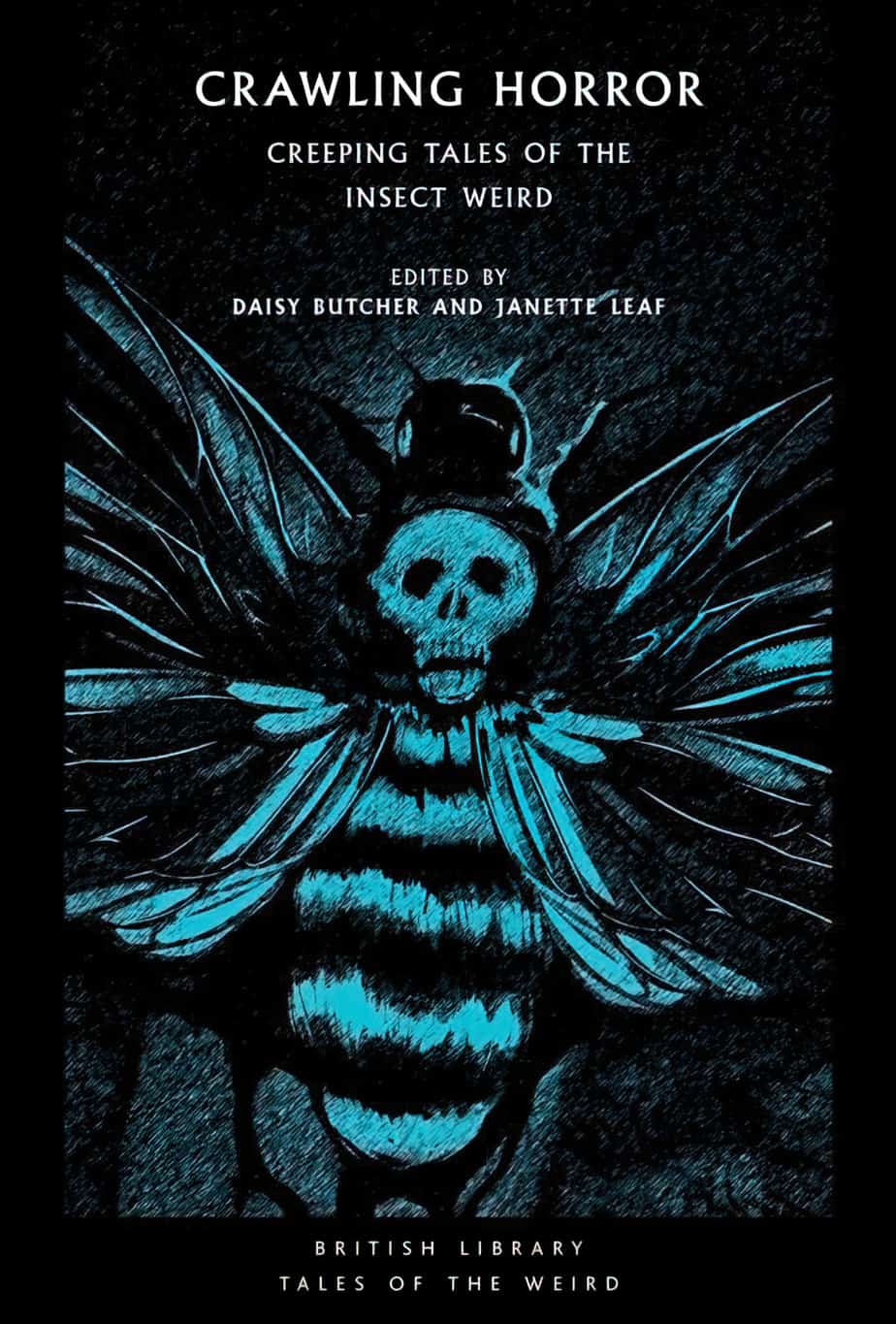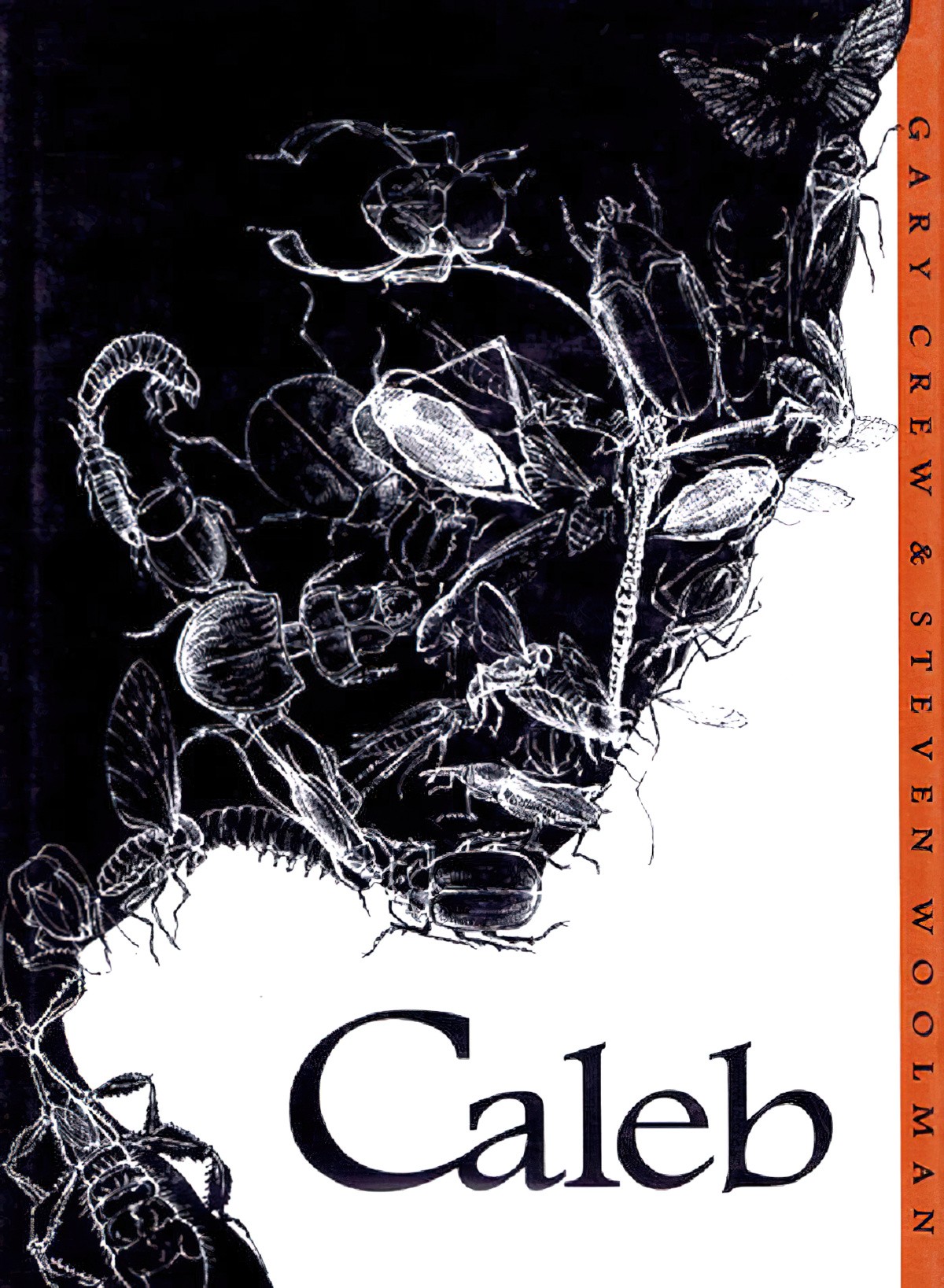Caleb (1996) by Gary Crew and Steven Woolman is less picturebook (compound word), more ‘illustrated short story’ in typical picture book binding. In other words, the story could exist in its own right. The illustrations expand the story, sure, but unlike typical picture books for younger readers the words still make sense on their own. So perhaps this is best described as an illustrated short story for older readers — the most interesting kind of story I know (and sadly, the one most likely to go out of print or never make it to soft back, from what I can gather).
Gary Crew is a writer who defies convention in other ways as well. Not only in his story telling techniques and characterisations, but also in his ability to transcend age and genre boundaries. Take for example his hugely successful 1990 horror novel, Strange Objects (William Heinemann). Among numerous other awards and nominations, this book won the highly respected Children’s Book Council Book of the Year for Older Readers in Australia. But it was also short-listed in the adult category for the Crime Writer’s of America Edgar Allan Poe Mystery Award! Likewise, while Crew also writes picture books, more often than not they are written for older readers rather than the youngsters you might expect. So while Gary Crew is primarily marketed as a children’s writer, he is not constrained by marketing boundaries. Indeed, many of his books are ageless, able to be enjoyed by children and adults alike.
Australian Horror Writers’ Association
The picture book for older readers is a pastiche of a work from an earlier time. Below is a page from a book called A Night In The Woods and Other Tales and Sketches.

(Even the name Caleb is from this era. The previous story in the same book is a character sketch of a choir leader called Caleb Crumpler.)
WHAT’S THE STORY ABOUT?
A gothic tale told in prose by a bookish, young university student. When he is assigned the precocious adolescent Caleb as his roommate it seems like disaster, but Caleb turns out to have amazing and gruesome talents.
MARKETING COPY
Written in first person point of view, the character as narrator, Stuart Quill, describes his university room mate Caleb van Doorn. It’s clear to the reader from inference that Caleb is the human version of an insect. Both Stuart and Caleb are studying entomology. Caleb’s behaviour grows stranger and stranger. He never seems to eat, but is one day caught eating a bowl of raw meat, with blood all around his mouth. On a field trip these two are supposed to be sharing a tent. Instead, Caleb disappears into the forest and manages to find a great collection of very rare insects. In the end, a woman is murdered and Caleb goes missing. The mystery is never solved. But enough information is given to the reader for us to know exactly what happened: Caleb metamorphoses backwards and forward between insect and human, and in some sort of ‘reverse sexual cannibalism’ (that’s what they call it, since it’s normally the females who eat the males), Miss Emily is killed.
WONDERFULNESS
The story of Caleb is a bit of a spoof on a genre of short story that was popular around Mary Shelley’s time, in which many readers would have seriously entertained the possibility that the supernatural events contained within were either true, or could be true. A modern audience responds differently. For us, the joy lies more firmly in the realm of fantasy rather than hypothesis. In any case, Gary Crew successfully emulates the formal style of the 18 and 1900s. Back then, a narrator with a firm grasp of learned language would be more easily believed. So the formality of the language would have added to the verisimilitude. Polysyllabic words are favoured over simple ones. Lengthy sentences are favoured over short, sharp ones. No unreliable narration here, folks:
Nor did the day-to-day rigours of education diminish my interest, particularly at high school, where all forms of science were a constant source of joy to me. And so, following graduation, it seemed quite natural that I should enrol in a science degree, majoring in biology.
The success of this story depends upon the reader knowing exactly what was happening without being told. To this end, we’re given plenty of clues about how Caleb is a sort of insect werewolf.
First, the narrator is ‘fascinated by insects’, and is fascinated especially by his room mate. Caleb van Doorn has insect-like qualities:
It was his voice that I heard first. A peculiar chirping sound that seemed to emanate from the back of his throat, rather than the larynx.
He was tall, well over six foot, and very thin. His head – which was little more than a skull with skin stretched over it – protruded from a high-collared shirt.
The description of the skull is reminiscent of an exoskeleton.
His acute thinness was accentuated by a loose-fitting vest of tan suede and a pair of dark-brown, heavily ribbed corduroy trousers pinched at the waist by a wide, black leather belt.
The belt sounds like it divides the body in two, seeming to create an insect-like division between abdomen and thorax.
The human race is filled with gangly youths, but it was Caleb’s eye-glasses – he was wearing pince-nez, a type of wingless spectacles that clamp on the bridge of the nose – which focused attention upon his most remarkable eyes. Blue-green they were, almost iridescent, while their unnatural enormity was further increased by the magnification of the lenses.
The eyes are a feature commonly described when authors offer thumbnail descriptions of a character. It’s not surprising that this feature is regularly highlighted in animal metaphors too.
‘Confined spaces don’t bother me,’ he answered. ‘Besides, look at this window. I can see the whole street. And the park.’
Physical similarities are only the start; once this has been set up, the author continues to find ways in which the character behaves like an insect would, or rather, as an insect would if that insect were human. Above, we have a creature used to small spaces (reminiscent of a chrysalis), and also one which either lives in trees or is used to flying, and most at home with a bird’s eye view of the world.
In lectures he was constantly wriggling, twisting this way and that and, worse, he had the habit of talking out loud… Curious little chirping noises he made…
NOTES ON THE ILLUSTRATION OF CALEB
The back flap of the hardback tells us that the ‘black plates’ were rendered in ink, with the background images on the text pages rendered in a combination of chalk and pencil. It’s significant that the black plates are indeed ‘black’ (heavily so, with a little white showing through the crosshatching). This is reminiscent of books of yesteryear, in which printing was so expensive that only black and white was possible. It was only much later that technologies allowed for full-colour printing. I’m guessing this is also the reason why the text is kept separate from the text. These days there’s no real reason to keep the text separate from the pictures, but if you look at a book from, say, fifty years ago, the pictures are printed on pages all their own, and sometimes on more glossy paper. Another modern book which emulates this practice of yesteryear is Gaiman and Mattotti’s Hansel and Gretel.
The only colour in Caleb is orange, mostly washed out, and therefore reminiscent of ‘old stuff’. There’s a bit of orange on the dust cover, and if you remove the dust cover you’ll find a browny orange, as if this is a very old book from long ago.
Apparently illustrator Steven Woolman majored in the sciences through high school, though studied design at tertiary level. In these pictures, his interest in science definitely shines through. Note that the washed-out anatomically correct drawings of insects tend to be cut-off, because the page of this book ends whereas it’s assumed the page of the drawings extends further. This ‘lopping off’ of the insects has a slightly unnerving effect. For example, we might see one spindly leg rather than the insect it belongs to. This technique is used also in the black plates, for example when Caleb leans over the narrator at his desk. The reader can’t see Caleb’s face, but we can see the shadow upon the wall, and that his head has a distinctly insect shape.
The heavy use of low-angle perspective throughout Caleb reminds me of the picture books of Chris Van Allsburg, who is well-known for varying his perspective across a story in order to heighten and lessen tension, or simply to provide variety. In Caleb, we see a view of a character in shadow looking down at us from a high window, looking down upon us. We are therefore vulnerable, being that much smaller/lower, and can empathise somewhat with the precarious position of the narrator, who had to share rooms with this character after all. Woolman himself said that his illustrations were influenced by watching horror films, which may explain his heavy use of varying perspectives.
What’s with the recurring owl? If looking for symbolism, the owl is sacred to the Greek goddess of learning. So it’s fitting that an owl might be flitting around university lodgings. On a background page, the owl stares straight at the reader, though you may not notice it immediately, because you’ll be too busy reading the words. Once you notice you’re being stared at, the menacing vibe is clear. It becomes clear that the owl is a pet of the narrator, because we see it perched on his desk as he studies by lamplight. When we see a topdown view of the specimen room, with Miss Emily standing in the doorway, we’ve seen enough images of the owl to assume that this is a view from the owl’s perspective. Indeed, the narrator himself has a ‘panoramic’ view of proceedings mostly by virtue of hindsight; this story has happened many years earlier, and in that time the narrator has had time to gain some sort of over-arching perspective. In other words, the owl is perhaps a motif for the narrator. Personally, I think the owl should have been depicted as a ‘pointy eared’ kind, since at one point Caleb mentions this about the narrator.

STORY SPECS
Published 1996 by Era Publications which is, these days at least, an educational publisher.
Also available in soft back
And digitally on iBooks.
Sadly, Steven Woolman died young at age 34, back in 2004. He had already illustrated at least 25 distinct works.
Gary Crew is a prolific Australian author who writes children’s books and young adult fiction which sometimes crosses over as adult fiction.
COMPARE WITH
THE RATCATCHER BY ROALD DAHL
In this short story the first person narrator and his friend have a rat problem so they call on the Ratcatcher. The man they meet is very much like a rat himself, with long,sulphur coloured teeth, pointed ears and black eyes.
The man was lean brown with a sharp face and two long sulphur coloured teeth that protruded from the upper jaw, overlapping the lower lip, pressing it inwards. The ears were thin and pointed and set far back on the nape of the neck.
TRYING TO SAVE PIGGY SNEED BY JOHN IRVING
This is a short story about a man who was bullied, in which the other characters are forced to confront their own behaviour towards the bullied man after something unfortunate happens. The story is from Irving’s collection of the same name. Piggy Sneed (we don’t learn his real name) is taunted and teased by small-town children, who see a resemblance between the man and a pig:
We never bothered Mr Strout [the icebox man] either (because of his ice tongs and his fabulous aggression towards dogs, which we could easily imagine being turned towards us). But the garbage collector had nothing for us — no treats, no aggression — and so we children reserved our capacity for teasing and taunting (and otherwise making trouble) for him.
There were so many reasons for calling him ‘Piggy’, I wonder why one of us didn’t think of a more original name. To begin with, he lived on a pig farm. He raised pigs, he slaughtered pigs; more importantly, he lived with his pigs — it was just a pig farm, there was no farm house, there was only the barn. There was a single stovepipe running into one of the stalls. That stall was heated by a wood stove for Piggy Sneed’s comfort — and, we children imagined, his pigs (in the winter) would crowd around him for warmth. He certainly smelled that way.
Also he had absorbed, by the uniqueness of his retardation and by hisproximity to his animal friends, certain piglike expressions and gestures. His face would jut in front of his body when he approached the garbage cans, as if he were rooting (hungrily) underground; he squinted his small, red eyes; his nose twitched with all the vigor of a snout; there were deep pink wrinkles on the back of his neck —- and the pale bristles, which sprouted at random along his jawline, in no way resembled a beard. He was short, heavy, and strong — he heaved the garbage cans to his back, he hurled their contents into the wooden, slat-sided truck bed.
John Irving, from Trying To Save Piggy Sneed.


